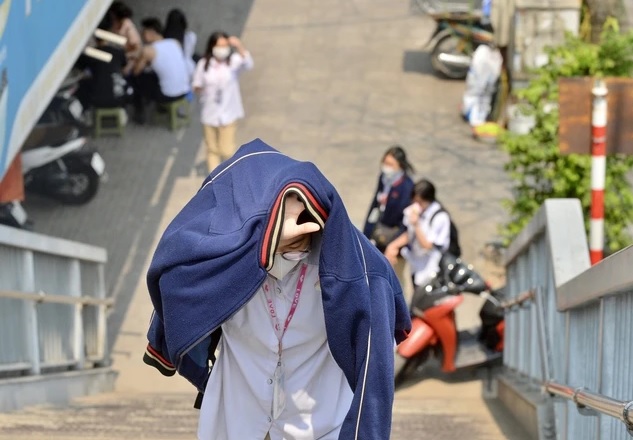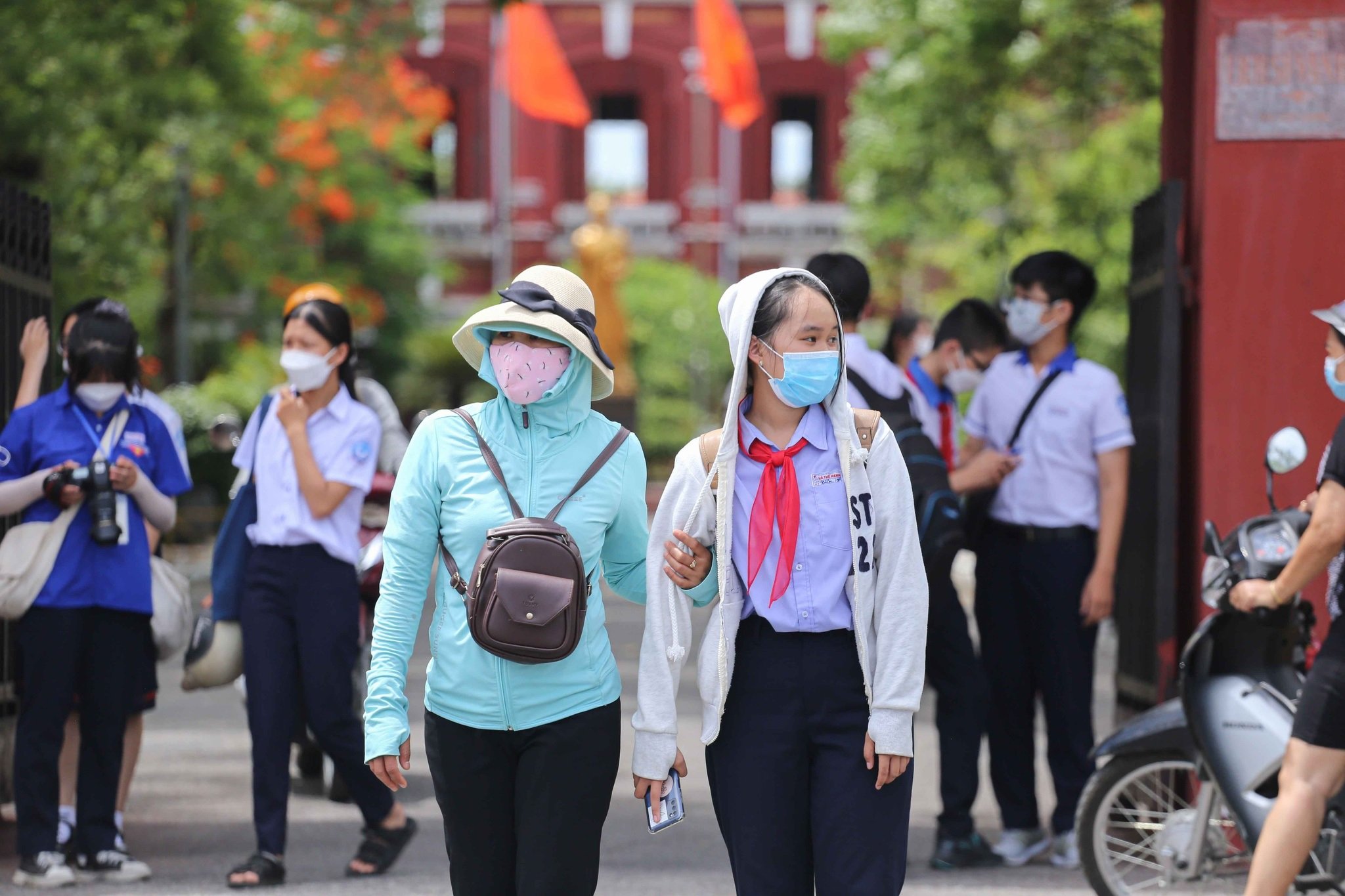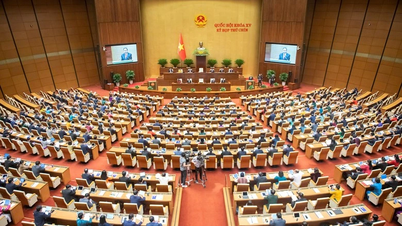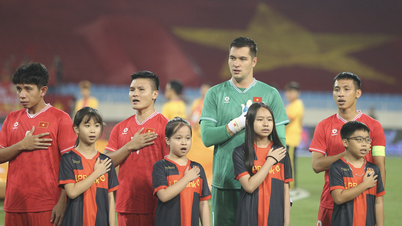Many solutions to protect students from the heat
Some schools have adjusted their timetables, especially for physicaleducation and extracurricular activities, due to the heat, but the schools do not have multi-purpose halls or roofs.
In hot weather, students are prone to fainting and exhaustion due to dehydration through sweat. In addition, prolonged increase in body temperature will damage the cardiovascular, respiratory, liver, kidney, and especially the nervous system.
Symptoms of headache, dizziness, nausea, drowsiness, impaired perception, convulsions, and even coma... are likely to occur in hot weather and when students are exposed to a lot of ultraviolet rays.

In hot weather, students are at risk of fatigue and exhaustion due to dehydration through sweat.
To help reduce the hot temperature, the school has increased the arrangement of drinking water to the classrooms for students, avoiding shortages of drinking water, ensuring 100% of drinking water for the students.
Classrooms use maximum ceiling fans, wall fans, etc. to help reduce the temperature and reduce the heat that affects health and learning quality.
The school also proactively changed the timetable, only arranging for students to study periods 1, 2, and 3 in the morning (from 7:00 to 9:00); in the afternoon, only arranging for periods 4 and 5 (from 3:30 to 5:15 p.m.)
During the training process, teachers also reduce the training intensity to avoid too much movement to ensure it is suitable for the students.
Quick view 8pm April 7: Quick view 8pm April 7: Severe heat, many people complain
Physical education teachers have been allowed by school leaders to let students study in areas with shade from trees or to arrange the teachers' parking lot so that students can study or under the halls of the classrooms, to avoid the scorching heat.
In addition, depending on conditions, some schools have installed mobile canopies, large umbrellas, mosquito nets, etc. to reduce direct sunlight on students while they participate in extracurricular activities in the school yard.
Many classrooms are also equipped with window curtains and decorated with green trees to reduce the heat and bring a bit of coolness to students.

Parents and students cover up to protect against the heat
The school may let students stay home if the weather is too severe.
With many of the above solutions, the school can maintain normal operations. However, if the weather is too harsh, the school board should also ask for instructions from higher authorities to temporarily suspend teaching activities to protect the health of students.
In the 2023-2024 school year schedule, the Ministry of Education and Training clearly stated that the director of the Department of Education and Training decides to let students stay home from school in case of extreme weather or natural disasters and arrange make-up classes; ensuring teachers' time off during the school year.
With this regulation, the decision to allow students to stay home from school when the weather is too cold or too hot will be decided by the director of the Department of Education and Training of each locality.
According to regulations of many Departments of Education and Training in the northern region, if the weather is below 7 degrees Celsius, middle and high school students will be off and study at home.
However, until now, there has been no regulation on whether students can be absent from school due to hot weather.
We look forward to the attention and direction of all levels when the weather begins to get hot like now.
Source link






![[Photo] Prime Ministers of Vietnam and Thailand visit the Exhibition of traditional handicraft products](https://vphoto.vietnam.vn/thumb/1200x675/vietnam/resource/IMAGE/2025/5/15/6cfcd1c23b3e4a238b7fcf93c91a65dd)



























![[Photo] National Assembly Chairman Tran Thanh Man meets with Thai Prime Minister Paetongtarn Shinawatra](https://vphoto.vietnam.vn/thumb/1200x675/vietnam/resource/IMAGE/2025/5/15/e71160b1572a457395f2816d84a18b45)






























































Comment (0)